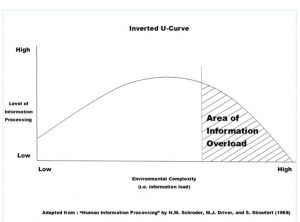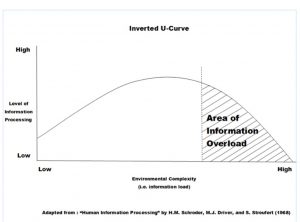Monitor your KPIs with a performance dashboard
Brian McAllister, Ph.D., CPA, College of Business, Colorado Springs Business Journal
A performance dashboard provides managers with a tool to tackle information overload.
Problem: My organization is collecting more and more data - financial data, operational statistics, qualitative information - to a point where we are becoming overwhelmed. We are good at collecting the data. In fact, we are drowning in it. But, we are struggling with how to use the data effectively.
Driving down Interstate 25, your attention is focused on your main tasks: driving, road conditions, other cars and safety. Occasionally, you take a look at your car's dashboard to check your speed, fuel gauge or direction of travel. Your car's dashboard provides information in a very concise manner.
Similarly, a performance dashboard is a useful management tool that provides information about how your organization is performing. Like a check-engine light, it indicates if you're proceeding as planned and provides warning signs when you deviate from your intended course.
In today's data-intensive world, insufficient information is not a problem. Instead, it's a problem of "too much of a good thing."
Since the 1960s, scholars have studied the issue of information overload, which occurs when "environmental complexity exceeds an individual's ability to process information."
Information overload can be illustrated as an inverted U-curve - information is useful to a point, and then becomes overwhelming, rendering it practically useless. In short, more isn't always better. A performance dashboard provides managers with a tool to tackle information overload. A dashboard summarizes the organization's Key Performance Indicators - or KPIs - in an easy-to-understand and concise manner. As a first step to creating a performance dashboard, an organization should address two issues: purpose and intended audience.

Purpose: Will the dashboard measure strategic goals, operational objectives or a combination of the two?
Audience: Will the dashboard audience be a governing body (i.e., board of directors), top managers, line managers - or some combination? An organization can implement a dashboard effectively to use data to make strategic and operational decisions. The two key aspects to creating a dashboard are: 1) Identify the purpose and intended audience; and 2) Develop measurable KPIs that capture an organization's strategic goals and/or operational objectives. In addition, organizations should consider the following:
- Stakeholder involvement: Creation of a successful dashboard should involve relevant stakeholders, including the board of directors, top managers, line managers and frontline staff. A common pitfall is delegating dashboard development solely to the accounting or finance department. Accounting and finance personnel are useful in identifying KPI data, but the relevant stakeholders must provide guidance about the strategic goals and operational objectives to be monitored.
- Compare to benchmarks: KPIs presented by themselves have limited usefulness. Instead, they should be benchmarked over time (month-to-month, year-to-year), against a budgeted dollar amount or stated goal, or through some other means.
- Allow for evolution: A healthy organization evolves, which means its strategic goals, operational objectives and KPIs also change. The KPIs included in a dashboard should be reassessed on a regular schedule so they are aligned with the evolving organization. Additionally, a useful dashboard may include KPIs related to initiatives with varied time horizons of an organization's goals and objectives.
- A picture is worth a thousand words: Numbers are great. However, KPIs do not have to be reported only as a table of dollars and amounts. Excel provides tools that transform numerical data simply into bar charts, line charts and scatter plots. Additionally, color schemes are useful to categorize good performance (green) from poor performance (red). Like a car's dashboard, a well-developed performance dashboard can be a useful tool to communicate with board members and managers about how their organization is performing and whether there are any troubling warning signs.
ACTION STEPS:
 Small and mid-sized organizations should consider a single dashboard that includes a mix of KPIs that measure short-term objectives and long-term goals. A single dashboard with a mix of KPIs could also spur communication within an organization's operating units. Line managers might appreciate "that's why we do that," while board members might gain a better understanding of "that's how we do that."
Small and mid-sized organizations should consider a single dashboard that includes a mix of KPIs that measure short-term objectives and long-term goals. A single dashboard with a mix of KPIs could also spur communication within an organization's operating units. Line managers might appreciate "that's why we do that," while board members might gain a better understanding of "that's how we do that."- The second step involves developing relevant KPIs. KPIs are measurable indicators that capture how an organization achieves strategic goals and/or operational objectives. KPIs should be collected at regular intervals, perhaps daily, weekly or monthly. Information reliability should also be considered.
- Finally, organizations should not limit themselves to financial indicators, but should consider a combination of financial and nonfinancial indicators. Financial indicators are fairly straightforward and include items typically derived from an organization's financial statements. Nonfinancial indicators measure an organization's activities in terms of processes and outcomes and include items like sales calls made, customer complaints, patients served and customer satisfaction. Nonfinancial indicators are often outside an organization's accounting system, and therefore must be collected in other ways. Operational logs and/or online surveys are two common ways to collect nonfinancial indicators.
Brian McAllister, Ph.D., CPA is an associate professor of accounting in the UCCS College of Business and faculty director of the Master of Science in Accounting program. He previously was an auditor for the local office of BKD LLP. McAllister also teaches financial accounting in CU's Executive MBA program. He has published articles on governmental, not-for-profit and financial accounting and auditing. Have a question for UCCS professors? Send it to OPED@uccs.edu. Personal information will be withheld.